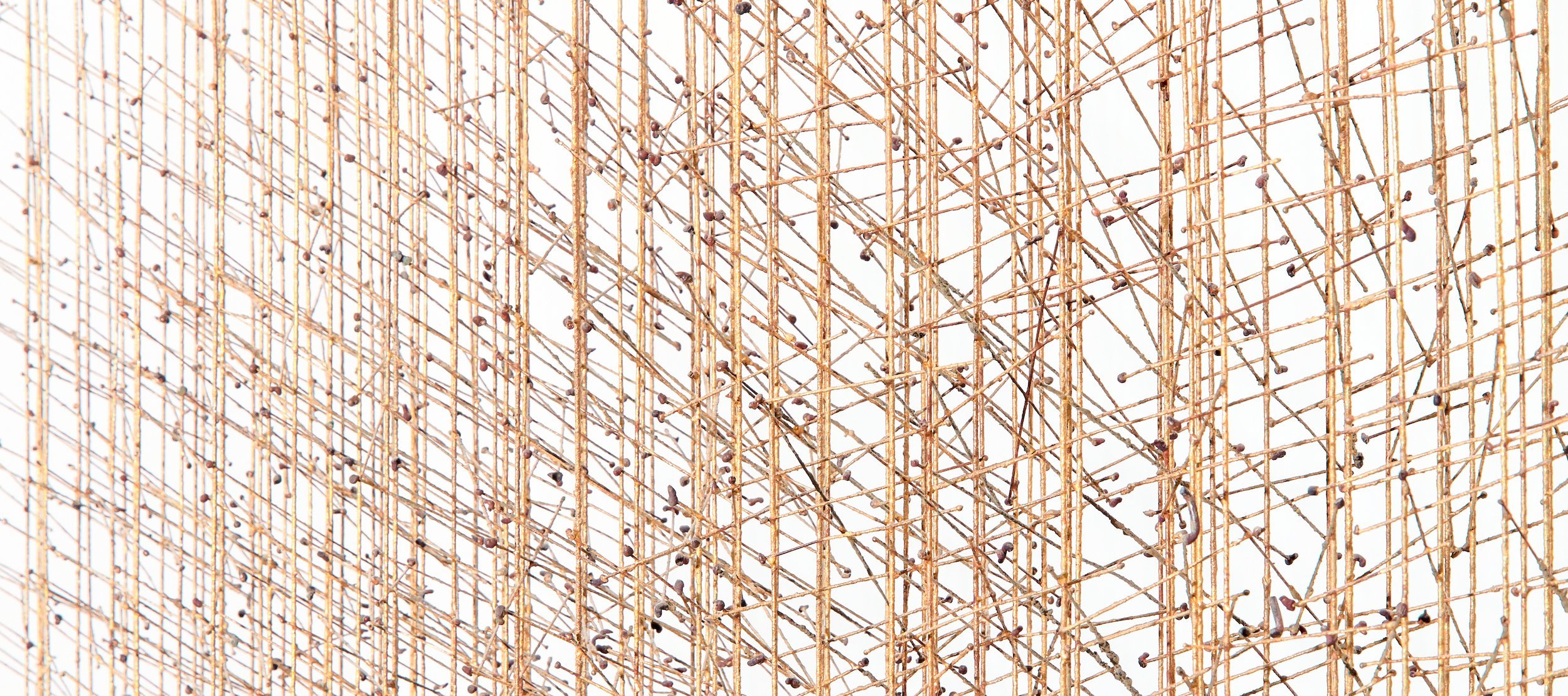
Harry Bertoia
Untitled (Screen Tree) (alternate view)
c. 1960
Brass-coated steel wire
49 x 73 x 9 inches
124.5 x 185.4 x 22.9 cm
Unique
Untitled (Screen Tree) (detail)
c. 1960
Brass-coated steel wire
49 x 73 x 9 inches
124.5 x 185.4 x 22.9 cm
Unique
Untitled (Screen Tree)
c. 1960
Brass-coated steel wire
49 x 73 x 9 inches
124.5 x 185.4 x 22.9 cm
Unique
-
Harry Bertoia’s screens are the artist’s most compelling works due to their ethereal beauty and extreme rarity. Of the very few the artist produced, this is one of the largest and most complex in the series, the majority of which are in museum collections.
Crafted with hundreds of meticulously arranged brass-coated steel wires, the screen, which balances simplicity with complexity and geometry with organicism, serves as a remarkable and significant illustration of Bertoia's exploratory technique in sculpture and is a superlative example of the artist’s work from the early 1960s.
Sitting atop four delicate feet and consisting of intersecting brass-coated metal wires to create remarkable depth, the screen assumes new and unexpected visual vocabularies when viewed from different angles: it is simultaneously an abstracted view of a forest, a wall of hay needles, and perhaps even a representation of the cosmos in its infinite intricacy.
It is, however, not only this formal paradox—its simplicity yet complexity—that sets this work apart. The work also possesses an important provenance that adds to its compelling history.
In 1957, Bertoia won an award from the Chicago-based Graham Foundation for Advanced Studies in the Fine Arts, which allowed him to travel throughout his native Italy and meet with internationally recognized artists and designers. This was an honor for Bertoia as well as an inflection point within his career. A few years later, upon its completion, the Foundation acquired this work from the artist.
-
Harry Bertoia (1915–1978), a trailblazing artist of Italian birth who later became an American citizen, left an indelible mark as one of the most innovative and prolific artists and designers of the postwar era. His artistic journey began at the prestigious Cranbrook Academy of Art, where he forged connections with future collaborators and peers, including Charles and Ray Eames, Florence Knoll, and Eero Saarinen.
Bertoia would later go on to take classes at Santa Monica City College, and, in 1947, created his first welded sculptures. Bertoia's legacy includes the creation of unique jewelry pieces, the design of iconic chairs, and the production of one-of-a-kind metal sculptures. Bertoia’s creations reflect a convergence of multiple disciplines, yet consistently exhibit a sculptural methodology in their execution, coupled with a pioneering embrace of metalwork.
-
Construction After the Enjoyment of a Mulberry Tree, 1953
The Art Institute of Chicago, Chicago, Illinois, USAUntitled (Multi-Plane Construction), 1953
The Museum of Fine Arts, Houston, Houston, Texas, USAScreen Tree, 1955
Crystal Bridges Museum of American Art, Bentonville, Arkansas, USAAltarpiece for MIT Chapel, 1955
Massachusetts Institute of Technology, Cambridge, Massachusetts, USAUntitled, c. 1960
Whitney Museum of American Art, New York, New York, USADogwood VII, 1962
Walker Art Center, Minneapolis, Minnesota, USAMemorial Fountain, 1972
Marshall University, Huntington, West Virginia, USATonal Sculpture, 1977
National Gallery of Art, Washington, DC, USA
Harry Bertoia and a colleague
Courtesy of the Harry Bertoia Foundation
